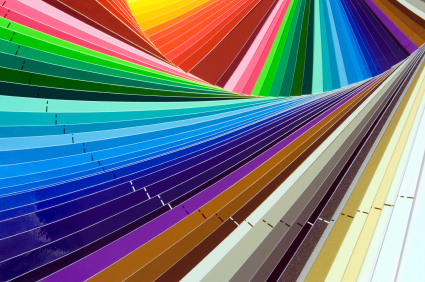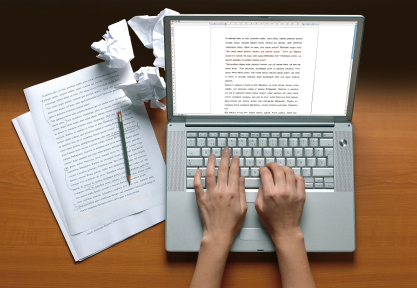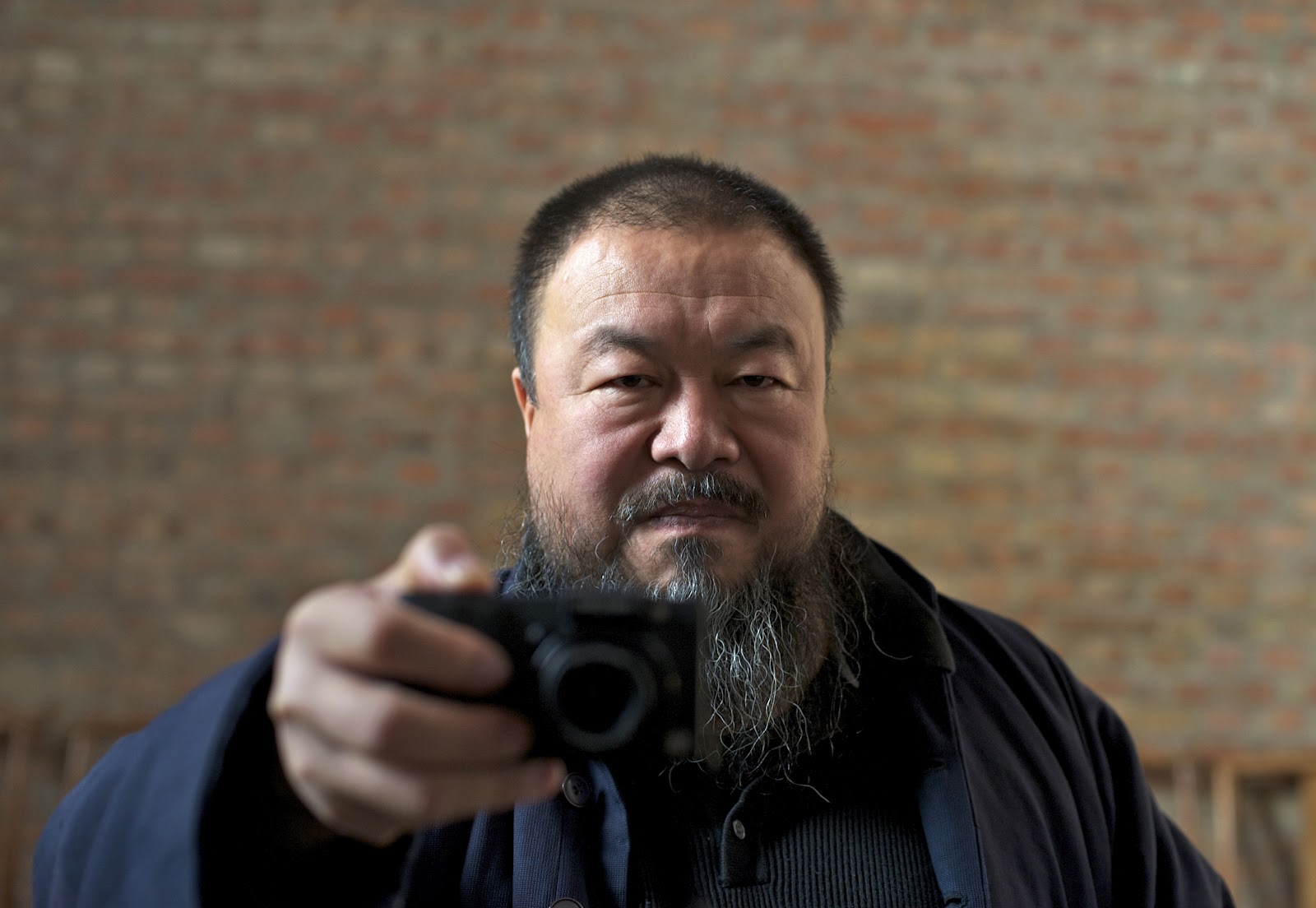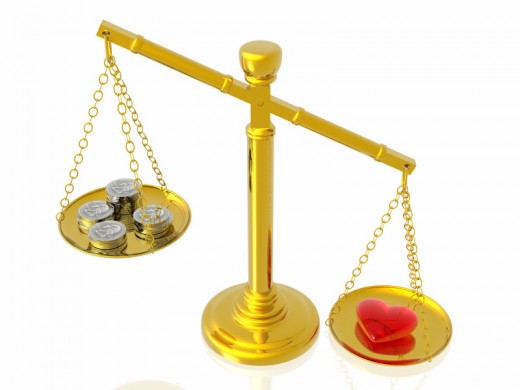Art News and Updates from Gallereo
All the latest news from the art world, as well as what's happening here at Gallereo. If you've built a gallery at Gallereo, let us know about your experience and you and your site could feature in our blog in the coming weeks.
Friday 20th December 2013Digital Workflow Basics for Artists

Those of you who are used to working in digital media will no doubt have already heard the term 'workflow' bandied around quite a bit, and those of who you are used to more traditional media may have run into from time to time and been a bit unclear on what it means. Really, though, it does what it says on the tin - it's a way of describing the art process from creation to digitisation (if necessary) to editing to finalisation to production (again, if necessary). The term is most popularly used by digital photographers, but anyone looking to sell artwork online has to dabble in at least some aspects of a digital image workflow in order to get their work onto the web.
Taking a look at your digital workflow is especially important when you have a large number of images to work with - this is probably why it's of such importance to digital photographers, as dealing with thousands of images can quickly grow difficult if you don't have an optimised workflow. Most of you probably won't have that many images to work through, but a good workflow can still save you a lot of hassle and headaches, and ensure that your output is consistently high-quality.
First of all, when you're digitising your physical pieces, ensure that your photo settings remain consistent throughout the process. If you have to switch things up for any reason, try to group as many images together as possible so that you wind up with as many files as possible that share settings.
Once you've digitised everything and you're ready to work on the computer, open your first couple of images from your first group of photo settings and make whatever edits you think are necessary to give your photos the most accurate colour and contrast. Most good quality editing programs will allow you to save these settings as presets, which will then allow you to import all the rest of your photos using those same settings. (Note: if you have never bothered to experiment with using dual monitors for your computer, you should definitely give it a shot - it makes the editing process infinitely more enjoyable, as you can dedicate an entire screen to your image and keep all your toolbars and palettes on the other monitor).
Do this for each of your photo groupings. As you go through and review the results, you'll probably want to make minute adjustments to some of the images - this is totally fine, but you'll have saved yourself hours of effort by using these presets instead of going through your images and customising each one.
The same concept applies when it comes time to save your photos - establishing the proper presets and then using what's known as a batch process to save your outputs will save you even more untold hours of work. As you get more comfortable working with your image editing program, you'll be able to expand the process even further by automating the process of adding in digital watermarks to protect your images from theft and any other enhancements you want. Happy automating!
Posted on December 20th 2013 on 08:18pm
0 Comments
Tuesday 17th December 2013Colour Management 101

You may have noticed it the last time you bought artwork online, or perhaps when you bought a piece of furniture, or almost anything else: the colours you saw when you were browsing online didn't match the colours of the product you received. For many things, this isn't really a big deal , so we shrug and move on with our lives. But when it comes to artwork, colour is another story completely. When working in a digital medium, even if it's just to create images to sell your offline work, you absolutely must have a properly colour-managed workflow. It's frustrating, but true, there's no way around it. Fortunately, this complicated world can be made much simpler with a small investment.
In a nutshell, the problem with colour is that every monitor is slightly different. You've probably noticed that the colour displays at the office or your friend's house look a little different, and you'd be right. Each manufacturer goes out of their way to provide a great viewing experience without any additional setup, but that can often mean compromising accurate colour representation in favour of added drama. Greater contrast and more saturated colours tend to be the real problem, and that goes double for black and white artwork.
Fortunately, there are now a number of devices available known as colour calibrators (technically, 'colourimeters', but you may have better luck asking for a monitor calibrator if you're not technically inclined) which can be had for less than $100 that will take all the hard work out of colour management. A colourimeter plugs into a USB port on your computer and is positioned directly over the monitor. The accompanying software then displays a number of different colours on your screen, which are detected by the colourimeter. The software then automatically computes the difference between what is being supposed to be displayed and what is actually displayed, and creates a colour profile that your computer uses to ensure your monitor is displaying accurate colours.
More advanced (and, typically, more expensive) colourimeters should also include a method for calibrating your printer, which can be very useful if you plan on selling prints of your digital artwork and handling the production aspects yourself. Printer calibration uses the same process as the monitor calibration, except you print out a selection of test sheets which can then be 'read' by the colourimeter.
Posted on December 17th 2013 on 08:10pm
0 Comments
Thursday 12th December 2013Using the Story Behind Your Art To Make Sales

For many artists, the most difficult thing they ever have to do is write about their own work. Even for those lucky few who are gifted with the talent to write, it can be a struggle to discuss their pieces. Somewhat irritatingly, though, writing about your art is one of the most certain ways to help boost your sales volume. Not only does it give your piece a huge SEO boost - not to mention a huge SEO boost for your Gallereo page as a whole - but it helps your readers and potential buyers connect with you on a basic human level, understanding who you are and how you got here.
Backstory is one of the many things that make art unique - and, therefore, more valuable. If you were considering two pieces to purchase, both of them executed with equally dazzling skill in similar styles and at similar price points, and you knew the story behind one of them and nothing about how the other was produced, which would you end up purchasing? Nine times out of ten, I'll bet you would buy the one with the story behind it. While there's something to be said for mystery, creative lineage has far more value to it.
So at this point, you may be thinking to yourself, 'But my pieces don't have good stories behind them!' - which, if you're honest, probably isn't true. This is one point where keeping a decently organized process book can really help you to remember the development of each of your pieces. Odds are, there is a pretty decent story behind each one, if only you can remember it. If, somehow, you feel there really isn't a story worth telling for each piece, then take a good hard look at yourself and your art career instead. People love reading about the plucky artist overcoming the odds and creating beauty out of a world of confusion, and while we don't all have an archetypal story to tell, any story is still miles better than no story.
There's another benefit besides the sales pitch to this process. Taking stock of where you were, where you are now and how you got here can be a huge wellspring of both creativity and self-confidence, two invaluable resources for any artist. Don't be afraid of writing - embrace your story, and use it to both empower you and drive you further ahead in your career.
Posted on December 12th 2013 on 11:56pm
0 Comments
Tuesday 10th December 2013The Best Cities for Art Lovers

As winter closes in around us in the Northern Hemisphere, those of us lucky enough to be able to get some time off work tend to look on it as a chance to get away to somewhere tropical and warm - but for those of us who love art, vacations are chance to see some of the world's greatest masterpieces. Here's a list of vacation city suggestions that host some of the world's most expansive and extensive art galleries. They're not listed in any particular order, because everyone has different tastes, but no matter what you like you're sure to find someplace that will suit your fancy.
Paris tends to be one of the first cities that art lovers go to on vacation, and with good reason. Not only is the city itself incredibly beautiful and romantic, even in the depths of winter, but Paris boasts a truly impressive range of world famous galleries. A gallery that almost everyone in the world has heard of, the Louvre boasts one of the most extensive art collections in the world, with somewhere in the neighbourhood of 35,000 pieces on display. For the more controversialist among you, the Centre Pompidou has polarised the Parisian art community since it was built, showcasing an impressive array of modern art. These are just two of the most famous, but there are far more galleries and museums than anyone would be able to see in a single trip, so plan out your visit carefully.
If modern art is more your style, you may want to consider a trip to either New York City or Chicago, both of which have world-famous modern art galleries. Chicago boasts the Museum for Contemporary Art, which does more or less what it says on the tin, as well as the Art Institute of Chicago, which features works from some of the greatest modern artists, including Jackson Pollock and Andy Warhol. New York is no slouch when it comes to modern art either, boasting its own truly staggering array of galleries, many of which are centred along a stretch of 5th Avenue that has become known for this fact. The Guggenheim Museum is located here, and the Metropolitan Museum of Art is nearby, along with the world-famous Museum of Modern Art which has recently re-opened its doors after an extended hiatus.
Back on the other side of the pond, one of the more typically overlooked cities for art lovers is Vienna, where you can find the Kunsthistorisches Museum, known to us in English simply as the Museum of Fine Arts. MuseumsQuartier Wien (Museum Quarter) also boasts a huge collection, and the modern MUMOK caters to all branches of modern contemporary art. Vienna is also an incredibly beautiful city to visit, with a huge number of architectural styles on display, making the city a work of art in and of itself.
Watch for our upcoming post on cities that have a burgeoning art scene if something a little more avante-garde is more your taste!
Posted on December 10th 2013 on 10:04pm
0 Comments
Saturday 07th December 2013Ai Weiwei: Never Sorry

We've been spending a lot of time on this blog helping you get things sorted out when it comes to your Gallereo page. Tips for setting your pages up to sell, how to manage work and life and art, and all sorts of things like that - but there's one thing we've been neglecting lately in our own posts: the art! So despite the title, we're sorry about that. Today, let's step away from the minutiae of how to go about selling your own work, and look at some of the artwork that's happening in the world around us. To that end, we're going to look at the documentary 'Ai Weiwei: Never Sorry', the brainchild of young filmmaker Alison Klayman, featuring the Chinese activist artist Ai Weiwei.
The film, which was initially released in 2012, won a special jury prize at the famous Sundance Festival, and was the premier film at the Hot Docs Canadian International Documentary Festival in Toronto in the same year. It chronicles the struggles of Mr. Ai against the oppressive Chinese government, while showcasing a number of his exhibits that have been featured in major galleries around the world, including the Haus der Kunst in Munich, Germany, and the Tate Modern in London, England. Even as Mr. Ai's artwork is highlighted, the skill with which Ms. Klayman handles the entire documentary is equally impressive.
Strong critical reception of the documentary has also raised Mr. Ai's profile in the art world, and shed light on the violently oppressive practices that are still a hallmark of life in modern China. If you haven't seen the film yet, you're strongly urged to go see it - especially when you find yourself stuck in a bit of a creative slump. The trials and tribulations that have completely enmeshed Mr. Ai and fuelled his creative expressions are an inspiration to all of us; if he can find the strength to keep creating in an environment as hostile as that one, then perhaps there's some hope for even the most blocked of us. In his case, his creativity is born out of the desire for social change, but that's the message he needs to spread in light of the current social climate of his homeland.
Posted on December 07th 2013 on 10:23pm
0 Comments
Wednesday 04th December 2013The Art-Work-Life Balance

The holy grail for most artists is to be able to support themselves through their art alone. After all, we do this because we love it - why let work get in the way of art if you can get paid for doing what you love? Needless to say, this remains a dream for most of us - but it IS possible to turn your dream into reality. If you're serious about turning art into your primary career, here are some great tips that will help prepare you for this monumental change in your life and keep you on track once you start.
The first question to ask yourself, though, is whether or not this is something you really want to do. While it's a great system if you can make it work, you really have to be 200% committed to making it work. If you ever find yourself coming up with excuses to avoid the studio, it might be best to keep your artwork as a secondary job for the time being. It's important to be able to tell the difference between a hobby you enjoy and something that you're willing to dedicate your life to.
If that hasn't scared you off, great! Let's get down to brass tacks. Firstly, you're going to have to be working two jobs for a while. Unless you've got a bunch of money saved, and you're willing to live on that while you get things off the ground, you're going to have to start working on your art business while you work your normal day job. No sugar-coating: this will be stressful, but worth it.
Start getting used to living on less income than you're currently making. Not only will the savings help you through the transition period when money stretches thin, but giving up some of the luxuries you're used to at the moment will help motivate you to really work hard on your art business to get them back.
Get used to working on your art business in a serious way. Put in the hours, whether you feel like dragging your feet or not. You don't get to choose when you show up to your current day job, and your art business shouldn't be any different if you're going to be successful with it. By the same logic, treat your time with the respect it deserves. If you have a home studio, be sure that your family knows that you may as well be at the office and that you shouldn't be interrupted.
Finally, make sure that you're focused on making sales. All the well-intentioned work isn't worth anything if you're not making sales or commissions. Produce, produce, produce, and then produce some more.
All that being said, once you get past the rough initial stages, it will become fun again. A new job is always complex and can have some difficult times at the beginning, but you get the hang of it. Work hard, persevere, and you'll wake up one morning to find that you're doing the thing you love with your life - and getting paid well for it. Who could ask for more?
Posted on December 04th 2013 on 07:05pm
0 Comments
Friday 29th November 2013Inspiration for Your Gallereo Blog

One of the best tools for your Gallereo page is the blog feature. You've probably heard us urging you on to use it, but perhaps you're holding back for some reason. Not every artist takes to writing, and some truly hate it, but a well-written blog really can make the difference between making a few sales and more dynamic success. One of the most common problems non-writers struggle with when starting out, though, is what to write about. Hopefully, this post will inspire you to take your blog out there and turn it into a fun, exciting project that stops being a chore and starts being a great tool for your art sales.
The most important thing to do with your blog is to write about things that interest you. Even if you're not the best writer in the world, your readers will be able to tell that you care about the things you're posting about, and it will resonate with them and they'll want to come back. Passion helps your natural 'voice' to come out in your words, and you'll see the benefits of it almost instantly, as you grow to enjoy it.
You've probably already embraced the art world fully into your life - most artists don't work in a vacuum, they live and breathe art even if they have to deal with a day job. When you're on the net or out in your hometown, keep an eye out for things that inspire you. Listen to what speaks to you, and use that as the kernel for a post. It doesn't have to be a thousand word essay on the relative merits of modern expressionism (although kudos if that's what inspires you) - even a simple image can reach out and touch people.
If that doesn't work for you, or you've already tried it, remember to talk about you. While you don't want every post to be about you or your artwork, it is your blog and you should be using it to inform your readers about what's happening. Are you excited about a piece you just finished? Share that excitement with us. Are you struggling with a piece that's been in your studio for months that just won't end? Tell us about it, and maybe your readers will provide you with the inspiration and encouragement you need to finish it up.
Above all else, make your blog reflect who you are as an artist. If you're not sure who that is, exactly, then try using your blog as a tool to help you figure it out. What would you want to post? What would you want to read about? What do you see that makes you want to turn to the person next to you to share it with them? That's what your blog should be about. Enjoy!
Posted on November 29th 2013 on 10:56pm
0 Comments
Tuesday 26th November 2013Don't Fall Prey to These Old Refrains

Every artist, without exception, has chosen to go into art because it's what they love to do. Nobody wakes up one day and says to themselves, 'Well, time to quit my job and become an artist to make some real cash!' We've all arrived where we are because its what we really want to be doing. That being said, we all have times when we find ourselves in the creative doldrums, not producing anything and not quite sure how we got so stuck. If that's where you find yourself, take a good honest look at what's holding you back, and see if you're unconsciously using any of these common artist's excuses for not doing what you love.
"I'm just not inspired!" is probably the most common one, and we've definitely all felt this way at one time or another. We recently posted an article about some ideas on how to deal with creative burnout, so be sure to check that out. Beyond that, though, there are some decent structures you can use to start generating ideas. Immerse yourself in the art world, find something you're passionate about, and try your hand at it. Use random input from the world. Most importantly, stop telling yourself you have no inspiration and just start doing SOMETHING. Anything. Once you unblock the logjam, your natural creativity will reassert itself.
"I can't find enough time to work on my projects!" is another equally common excuse for not creating, and it has an extremely simple answer: make time. Work, family, and life in general get in the way, but in the end we always make time for the things that we really want to do. Prioritise your artistic time more highly, whether it's on solid afternoon in the studio every week or even only half an hour every day. If it's truly important to you, you'll make it happen.
"Nobody likes my work!' is an excuse that can often lead to others. As artists, most of us are naturally sensitive, and even those of us who aren't easily offended can still be cast down by negative feedback (or even a lack of constant positive feedback). There are a couple of ways to handle this: change your work (not recommended), use it as motivation to excel (better), or join a group dedicated towards constructive critiques (best). A critique group will help you deal with almost all of these excuses, and keep you on track and producing the work you love.
Posted on November 26th 2013 on 05:37pm
0 Comments
Friday 22nd November 2013How to Stand Out from the Pack

One of the things that staggers most artists who are getting their start in online art sales is the sheer overwhelming number of other artists who are already out there creating. We all react in different ways - some shrink away from the idea, some don't care, and some view it as a challenge. No matter how you handle it, however, there are some great ways to make yourself stand out from the pack that modern digital art sales has become.
We've covered a lot of tips about how to actually get eyes on your work already - so be sure to check out those posts if you haven't already. We cover some great tips on SEO for artists, specifically related to your Gallereo page, how to leverage social networking and your Gallereo blog to create a fanbase, and other essentials for the digital age. But standing out in a crowd is more than just getting people to look at your work - it truly comes from two main elements, and they both start with embracing art completely and utterly into your life. So if you haven't done that, go for it - we'll wait.
Probably the most important thing that will help you stand out (and further develop your own artistic sensibilities at the same time) is living, breathing and eating art every day. If 'artist' isn't your day job, it can be a bit more difficult, but it's absolutely essential that you immerse yourself in the art world. Getting a sense of what else is out there, what's contemporary, what's reactionary, and what's innovative - no matter what your style or medium or sensibility is - will help you figure out where you want to go and how you can differentiate yourself from everyone else.
Equally important is to not be intimidated by the flood of work that some artists post online. Instead of posting every single piece that you do, ensure that you're showing only your very best work that represents who you are as an artist. Figure out what it is that makes you different, or even what it is you want to make you different, and highlight that aspect of your work. You'll find that your own uniquely individual style will start to emerge, the more you start to embrace both the art world as a whole and your own personal desires.
Posted on November 22nd 2013 on 07:43pm
0 Comments
Wednesday 20th November 2013Tips for Overcoming Creative Burnout

Creative burnout is the dreaded spectre that hides somewhere in the back of every artist's mind, and every once in a while climbs out to scare the living daylights out of us. All of us have felt it at one time or another, and coped with varying degrees of success. Sometimes, we really do just need a break - but other times, that's simply not an option. Fortunately, with a bit of careful thought, it's possible to overcome it with a minimum of fuss and get back into the the spirit of doing what we love: creating.
Creative burnout can come from a number of different sources, but in almost every case, the ways of coping with it are similar. It all starts without finding out just what's troubling you. Creative blocks are almost always directly attributable to something, even if it's just that you've been in the studio for 20 hours a day for the last week (actually, that one's pretty obvious - get more sleep). Take a break, do something completely unrelated to your art, and come back later with a clearer head.
In many cases, that's not an option, unfortunately. If you find yourself constantly coming up empty in the inspiration department, try reaching out to other artists. Many artists are introverts, and that makes us a bit more shy about reaching out to other artists, but not only can they be incredibly inspiring, sometimes it's also nice to realize that you're not the only one who's had a creative burnout period - and they may have some other advice on ways to overcome it.
While we all love to sell our work, a constant focus on artwork that will sell can seriously impact our creative inspiration. Don't ignore the monetary side of things, because 'starving artist' shouldn't have to be your lifestyle, but don't overemphasize it. Consider dividing your creative time into two streams, one that is purely self-expression and another that is intended to bring home the bacon.
No matter how you wind up dealing with your burnout - and this is by no means an exhaustive list, just a starting place - remember that perseverance is the key to overcoming any kind of creative problem. You won't get anywhere by not trying. Trying using your frustration as a tool to inspire you, and you may find that your creative block becomes your most useful creative asset.
Posted on November 20th 2013 on 08:01pm
0 Comments
 Those of you who are used to working in digital media will no doubt have already heard the term 'workflow' bandied around quite a bit, and those of who you are used to more traditional media may have run into from time to time and been a bit unclear on what it means. Really, though, it does what it says on the tin - it's a way of describing the art process from creation to digitisation (if necessary) to editing to finalisation to production (again, if necessary). The term is most popularly used by digital photographers, but anyone looking to sell artwork online has to dabble in at least some aspects of a digital image workflow in order to get their work onto the web.
Those of you who are used to working in digital media will no doubt have already heard the term 'workflow' bandied around quite a bit, and those of who you are used to more traditional media may have run into from time to time and been a bit unclear on what it means. Really, though, it does what it says on the tin - it's a way of describing the art process from creation to digitisation (if necessary) to editing to finalisation to production (again, if necessary). The term is most popularly used by digital photographers, but anyone looking to sell artwork online has to dabble in at least some aspects of a digital image workflow in order to get their work onto the web. You may have noticed it the last time you bought artwork online, or perhaps when you bought a piece of furniture, or almost anything else: the colours you saw when you were browsing online didn't match the colours of the product you received. For many things, this isn't really a big deal , so we shrug and move on with our lives. But when it comes to artwork, colour is another story completely. When working in a digital medium, even if it's just to create images to sell your offline work, you absolutely must have a properly colour-managed workflow. It's frustrating, but true, there's no way around it. Fortunately, this complicated world can be made much simpler with a small investment.
You may have noticed it the last time you bought artwork online, or perhaps when you bought a piece of furniture, or almost anything else: the colours you saw when you were browsing online didn't match the colours of the product you received. For many things, this isn't really a big deal , so we shrug and move on with our lives. But when it comes to artwork, colour is another story completely. When working in a digital medium, even if it's just to create images to sell your offline work, you absolutely must have a properly colour-managed workflow. It's frustrating, but true, there's no way around it. Fortunately, this complicated world can be made much simpler with a small investment. For many artists, the most difficult thing they ever have to do is write about their own work. Even for those lucky few who are gifted with the talent to write, it can be a struggle to discuss their pieces. Somewhat irritatingly, though, writing about your art is one of the most certain ways to help boost your sales volume. Not only does it give your piece a huge SEO boost - not to mention a huge SEO boost for your Gallereo page as a whole - but it helps your readers and potential buyers connect with you on a basic human level, understanding who you are and how you got here.
For many artists, the most difficult thing they ever have to do is write about their own work. Even for those lucky few who are gifted with the talent to write, it can be a struggle to discuss their pieces. Somewhat irritatingly, though, writing about your art is one of the most certain ways to help boost your sales volume. Not only does it give your piece a huge SEO boost - not to mention a huge SEO boost for your Gallereo page as a whole - but it helps your readers and potential buyers connect with you on a basic human level, understanding who you are and how you got here. As winter closes in around us in the Northern Hemisphere, those of us lucky enough to be able to get some time off work tend to look on it as a chance to get away to somewhere tropical and warm - but for those of us who love art, vacations are chance to see some of the world's greatest masterpieces. Here's a list of vacation city suggestions that host some of the world's most expansive and extensive art galleries. They're not listed in any particular order, because everyone has different tastes, but no matter what you like you're sure to find someplace that will suit your fancy.
As winter closes in around us in the Northern Hemisphere, those of us lucky enough to be able to get some time off work tend to look on it as a chance to get away to somewhere tropical and warm - but for those of us who love art, vacations are chance to see some of the world's greatest masterpieces. Here's a list of vacation city suggestions that host some of the world's most expansive and extensive art galleries. They're not listed in any particular order, because everyone has different tastes, but no matter what you like you're sure to find someplace that will suit your fancy. We've been spending a lot of time on this blog helping you get things sorted out when it comes to your Gallereo page. Tips for setting your pages up to sell, how to manage work and life and art, and all sorts of things like that - but there's one thing we've been neglecting lately in our own posts: the art! So despite the title, we're sorry about that. Today, let's step away from the minutiae of how to go about selling your own work, and look at some of the artwork that's happening in the world around us. To that end, we're going to look at the documentary 'Ai Weiwei: Never Sorry', the brainchild of young filmmaker Alison Klayman, featuring the Chinese activist artist Ai Weiwei.
We've been spending a lot of time on this blog helping you get things sorted out when it comes to your Gallereo page. Tips for setting your pages up to sell, how to manage work and life and art, and all sorts of things like that - but there's one thing we've been neglecting lately in our own posts: the art! So despite the title, we're sorry about that. Today, let's step away from the minutiae of how to go about selling your own work, and look at some of the artwork that's happening in the world around us. To that end, we're going to look at the documentary 'Ai Weiwei: Never Sorry', the brainchild of young filmmaker Alison Klayman, featuring the Chinese activist artist Ai Weiwei. The holy grail for most artists is to be able to support themselves through their art alone. After all, we do this because we love it - why let work get in the way of art if you can get paid for doing what you love? Needless to say, this remains a dream for most of us - but it IS possible to turn your dream into reality. If you're serious about turning art into your primary career, here are some great tips that will help prepare you for this monumental change in your life and keep you on track once you start.
The holy grail for most artists is to be able to support themselves through their art alone. After all, we do this because we love it - why let work get in the way of art if you can get paid for doing what you love? Needless to say, this remains a dream for most of us - but it IS possible to turn your dream into reality. If you're serious about turning art into your primary career, here are some great tips that will help prepare you for this monumental change in your life and keep you on track once you start. One of the best tools for your Gallereo page is the blog feature. You've probably heard us urging you on to use it, but perhaps you're holding back for some reason. Not every artist takes to writing, and some truly hate it, but a well-written blog really can make the difference between making a few sales and more dynamic success. One of the most common problems non-writers struggle with when starting out, though, is what to write about. Hopefully, this post will inspire you to take your blog out there and turn it into a fun, exciting project that stops being a chore and starts being a great tool for your art sales.
One of the best tools for your Gallereo page is the blog feature. You've probably heard us urging you on to use it, but perhaps you're holding back for some reason. Not every artist takes to writing, and some truly hate it, but a well-written blog really can make the difference between making a few sales and more dynamic success. One of the most common problems non-writers struggle with when starting out, though, is what to write about. Hopefully, this post will inspire you to take your blog out there and turn it into a fun, exciting project that stops being a chore and starts being a great tool for your art sales. Every artist, without exception, has chosen to go into art because it's what they love to do. Nobody wakes up one day and says to themselves, 'Well, time to quit my job and become an artist to make some real cash!' We've all arrived where we are because its what we really want to be doing. That being said, we all have times when we find ourselves in the creative doldrums, not producing anything and not quite sure how we got so stuck. If that's where you find yourself, take a good honest look at what's holding you back, and see if you're unconsciously using any of these common artist's excuses for not doing what you love.
Every artist, without exception, has chosen to go into art because it's what they love to do. Nobody wakes up one day and says to themselves, 'Well, time to quit my job and become an artist to make some real cash!' We've all arrived where we are because its what we really want to be doing. That being said, we all have times when we find ourselves in the creative doldrums, not producing anything and not quite sure how we got so stuck. If that's where you find yourself, take a good honest look at what's holding you back, and see if you're unconsciously using any of these common artist's excuses for not doing what you love. One of the things that staggers most artists who are getting their start in online art sales is the sheer overwhelming number of other artists who are already out there creating. We all react in different ways - some shrink away from the idea, some don't care, and some view it as a challenge. No matter how you handle it, however, there are some great ways to make yourself stand out from the pack that modern digital art sales has become.
One of the things that staggers most artists who are getting their start in online art sales is the sheer overwhelming number of other artists who are already out there creating. We all react in different ways - some shrink away from the idea, some don't care, and some view it as a challenge. No matter how you handle it, however, there are some great ways to make yourself stand out from the pack that modern digital art sales has become. Creative burnout is the dreaded spectre that hides somewhere in the back of every artist's mind, and every once in a while climbs out to scare the living daylights out of us. All of us have felt it at one time or another, and coped with varying degrees of success. Sometimes, we really do just need a break - but other times, that's simply not an option. Fortunately, with a bit of careful thought, it's possible to overcome it with a minimum of fuss and get back into the the spirit of doing what we love: creating.
Creative burnout is the dreaded spectre that hides somewhere in the back of every artist's mind, and every once in a while climbs out to scare the living daylights out of us. All of us have felt it at one time or another, and coped with varying degrees of success. Sometimes, we really do just need a break - but other times, that's simply not an option. Fortunately, with a bit of careful thought, it's possible to overcome it with a minimum of fuss and get back into the the spirit of doing what we love: creating.



